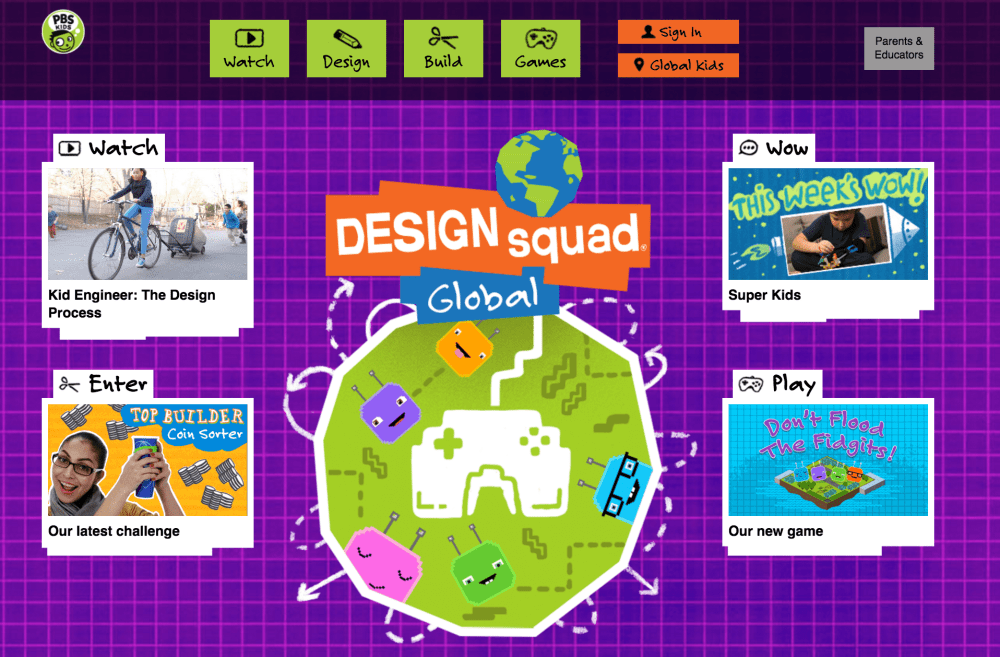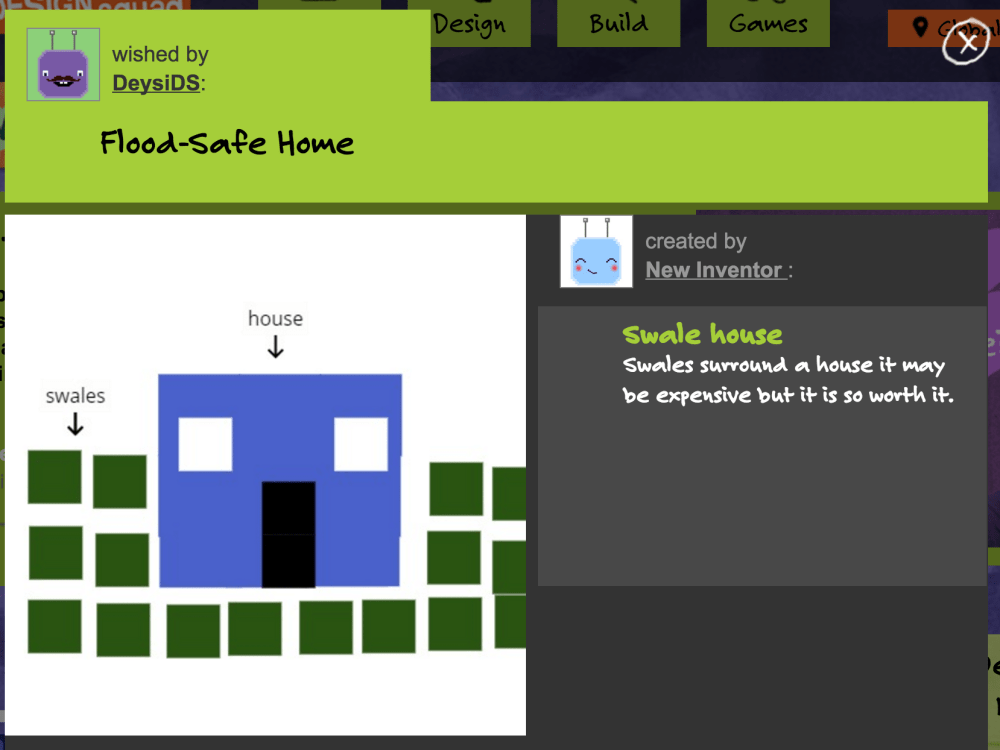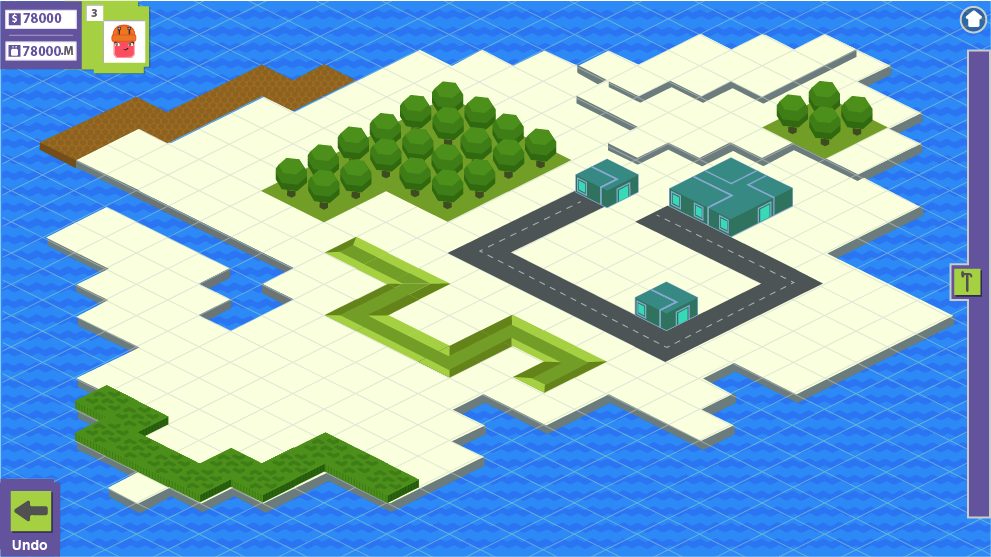
I’m talking today with a friend and colleague Melissa Carlson about her work in making digital engineering games.
GeekDad: Tell me who you are in sixteen words.
Melissa Carlson: I’m a Senior Digital Producer in the Children’s Media and Education group at WGBH Educational Foundation.
GD: What do you do?
MC: I produce all the digital content for the Design Squad Global website, which includes our recent site redesign, new games, online community, and blog. I work closely with the project’s executive producer Marisa Wolsky to set the vision, our advisors to review the content, and a team of designers and developers to collaboratively bring this vision to life. My role is a balance of content creation and project management, and a typical day might include brainstorming ideas, writing a script, editing blogs, reviewing content with stakeholders, and managing tasks for the team.

GD: I know Design Squad as an engineering TV series and web series on PBS KIDS. But what is Design Squad Global?
MC: Funded by the National Science Foundation and The Lemelson Foundation, Design Squad Global is a new initiative connecting U.S. kids to their peers in other countries, challenging them to solve global engineering problems, and expanding their cross-cultural understanding. Design Squad Global Clubs, which match children in out-of-school programs in the U.S. with those in Southern Africa to work together on engineering projects that meet needs in their communities, are currently being piloted.
GD: How has Design Squad been received?
MC: We’re thrilled to have received two EMMY awards for “Outstanding New Approaches” and a Kidscreen Award for “Best Kids Website.”
GD: We have lured readers here to discover a game about water. They’re ready. Please tell them about it.
MC: Don’t Flood the Fidgits! is a flood prevention simulation game that challenges children to build a safe, dry city for our fictional Fidgit characters. Players need to consider a number of factors as they build and redesign, including how real-world building materials and strategies impact their city’s ability to withstand a series of floods. The game offers three different boards to build on–island, river, and peninsula–which gives players the opportunity to explore different types of flooding. Working with a limited budget and toward a population goal, players decide how they’re going to use the sixteen different building materials provided to build the safest city they can. Along the way, they can flood their city to see what might need redesigning.

The game is available on the Design Squad Global website, and is also a part of PBS KIDS’ virtual world, Kart Kingdom. If you’re a Kart Kingdom player, you can earn special power-ups (like a bigger budget!) to use in the game. You can also craft a sweet Fidgit cart for zipping around in Kart Kingdom.

GD: How do you develop a game like this?
MC: We started this game like we do many others, by brainstorming ideas with a broad team including our curriculum advisor. We initially prototyped a totally different direction–a game about building a recycling machine–but realized that, even though it was appealing, it didn’t allow for the kind of design process learning that was our primary goal.
Building a simulation game is a tremendous effort. We worked closely with a civil engineer who advised us on which building materials to offer, how they should impact flooding, and what types of land our game boards should include. To begin, we designed three game boards with different land types: high ground, flood plain, and below sea level. Each land type was assigned a different base “score” that identified how prone to flooding it would be. Then, each building material was assigned both a purchase price and its own score. The score identified how much a material would help prevent flooding (which might differ based on the land type it was placed on) and the range of its impact. Next, we calibrated the game’s economy to make sure players had enough money to play successfully, but not such a surplus that they could buy anything they wanted. The population goals for each board were also carefully tested to ensure players would have to build some of their homes on flood-prone areas and design ways to protect them. Finally, we built out the feedback report players see after each flood, defining about 80 conditional statements that became the basis for tips offered to players (for example, if your homes are all built near the water, we’d suggest you build more homes inland).

Throughout this process, we tested the game–building hundreds of cities!–to see if we’d gotten the math right and readjusting when we hadn’t. Truly the design process in action! Fortunately, the game developer created terrific tools that allowed me to design the game boards and adjust the scores of different materials myself with a demo build. Meanwhile, our designer had the unique challenge of creating a visual style for the city that didn’t skew too far toward any particular place, in keeping with our inclusive global competency focus.
GD: What do you hope kids will learn?
MC: The game gives children the opportunity to practice their design process skills as they build, test, and re-design their cities, showing them there are many ways to solve a problem. We also hope kids will discover how engineering can have an impact on an issue of global significance.
On the website, this month’s Global Challenge is to design flood-safe homes, and we’re excited to see children transferring their learning from the game to this challenge by including materials like green roofs and swales in their home designs.

GD: You mentioned that your own design process involved field testing with kids. What did you see in testing?
MC: When we tested the game with our target audience of 9-10-year-olds we saw a wide range of building strategies and kinds of cities: ringed by seawalls, filled with green, or bisected with roads. Players found a lot of different ways to succeed, which was terrific! Another exciting observation was that the children spent a long time building their cities and really got absorbed in the task. The visual design and the Fidgits were also both really appealing aspects of the game in testing.
GD: Wrapping this up, I still need closure: what is a swale?
MC: A swale is one of the real-world building materials in the game. It’s a depression that’s designed to collect water and slowly carry it away, while also absorbing it into the ground so there’s less flooding. Swales are used in green infrastructure building, which is another way of saying they’re part of a system, like rain gardens and wetlands, that uses nature to help prevent flooding. Swale was definitely a new term for all of us on the team! But now I’ve even become a bit of a “swale geek” and can spot them wherever I go.

Full Disclosure: Besides Melissa Carlson, Tara Taylor, Kal Gieber, Stefan Mallette, Jay Thompson, Louise Flannery, and Amy Stahl, the current digital team for Design Squad Global includes this author.

